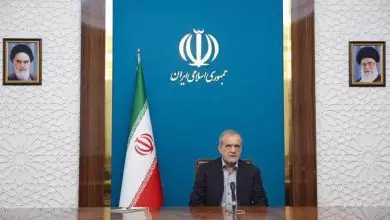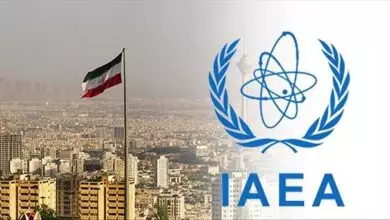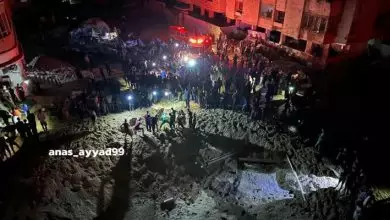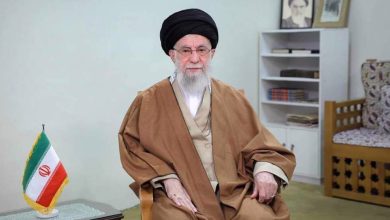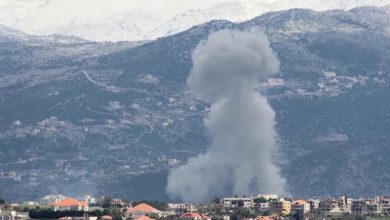HUGE CROWDS: Iran Stages Majestic Funeral for Victims of Zionist-US Aggression
Iran conducted a large-scale funeral service to honor individuals who lost their lives during the 12-day conflict involving Israel and the United States against the Islamic Republic.
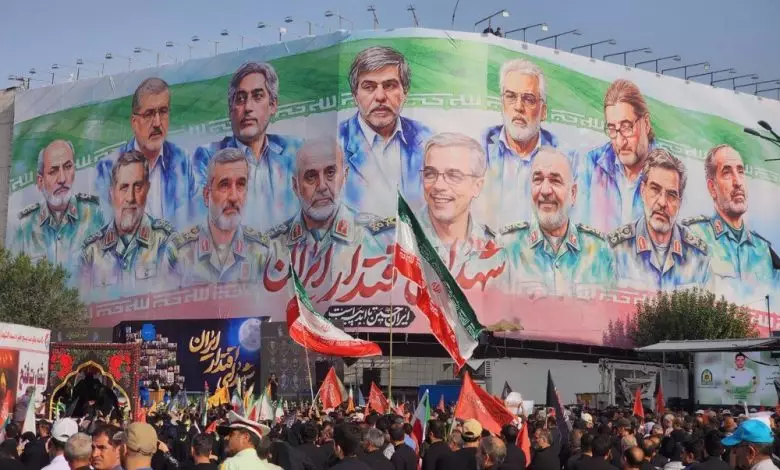
In Tehran, a funeral ceremony commenced at 8:00 am (0430 GMT) on Saturday for 60 individuals, including nuclear scientists, military commanders, and civilians, who were killed in Israeli strikes. The procession started in Enqelab Square and continued to Azadi Square, traversing approximately 11 kilometers through the expanse of the capital city.
A large assembly of mourners took part in the procession, following the coffins while chanting slogans against Israel and America, and holding placards.
“Boom boom Tel Aviv,” declared a banner, alluding to the Iranian missiles launched at Israel in response to its strikes on Iran amidst the conflict.
Iranian President Masoud Pezeshkian, accompanied by high-ranking government officials and military leaders, including Brigadier General Esmail Qa’ani, head of the Quds Force, were present at the event.
Foreign Minister Abbas Araghchi stated that the Iranians who were martyred made a significant sacrifice by shedding their “blood” in the 12-day conflict with Israel, but did not receive “honor”.
In a statement shared on Instagram, a figure declared that Iranians have sacrificed their blood and loved ones without compromising their honor, even amidst relentless bombardment. He emphasized that the concept of “surrender” is not acknowledged in Iran’s lexicon.
Foreign Ministry spokesperson Esmaeil Baghaei, present at the procession, offered heartfelt tributes to the martyrs through a message on X.
In a poignant address, it was expressed that the resilient citizens of Iran are enduring a profound grief as they bear the loss of their most devoted and patriotic individuals—commanders, elites, athletes, women, and children—who were martyred in the conflict initiated by the “aggressor Zionist regime.” They are laid to rest with deep reverence in their homeland, symbolizing mythical heroes, with the hope that each may inspire the rise of future heroes.
Photographs depicted coffins adorned with Iranian flags and featuring images of the slain commanders in uniform, positioned near the iconic Enqelab Square in the heart of Tehran.
Mohsen Mahmoudi, the leader of Tehran’s Islamic Development Coordination Council, described the occasion as a “momentous day for Islamic Iran and the revolution.”
Among those martyred is Mohammad Bagheri, who held the rank of major general and served as the second-in-command of the armed forces following the leadership of Ayatollah Seyyed Ali Khamenei, the Leader of the Islamic Revolution.
He is set to be interred beside his wife and daughter, a journalist working for a local media organization, all of whom were killed in an Israeli strike in Tehran.
Nuclear scientist Mohammad Mehdi Tehranchi, who was also a victim in the brutal attack, will be laid to rest alongside his wife.
Major General Hossein Salami, the Chief Commander of the Islamic Revolution Guards Corps (IRGC), who was martyred during the initial day of the unprovoked aggression, will be laid to rest following a ceremony on Saturday. The event will also pay tribute to at least 30 other top commanders.
Out of the 60 individuals scheduled for burial following the service, four are children.
Iranian authorities report that over 600 individuals, primarily civilians, have lost their lives due to military actions attributed to Israel and the United States against Iran.
The ceremony takes place on the second day of the Islamic month of Muharram, marking the remembrance of Imam Hussein (AS), the third Shia Imam, and his 72 companions who were martyred.
In 680 AD, Imam Hussein (AS) and his devoted supporters courageously confronted the significantly larger forces of the Umayyad caliph Yazid I during the Battle of Karbala in southern Iraq, valiantly standing for justice.
“Iranians have demonstrated that they are the followers of Imam Hussein; a people who, in the struggle between truth and falsehood, rely on faith, resilience, and national unity to triumph over adversity,” Baghaei wrote.
In a statement, the Foreign Ministry described the funeral as more than a mere farewell ceremony, characterizing it as a powerful demonstration of national unity, showing resilience and collective presence in the face of terror.
Iran was lauded as “a nation that has faced numerous trials in its quest for independence, freedom, and dignity, emerging triumphant.”
The statement emphasized that the enduring presence symbolizes the Iranian people’s loyalty to the path of sacrifice and resistance for their nation’s dignity. It further conveys a clear message to the international community: Iran’s citizens are converting threats into unity and transforming conflict into an opportunity to realize a national will, persistently advancing along their chosen path.


